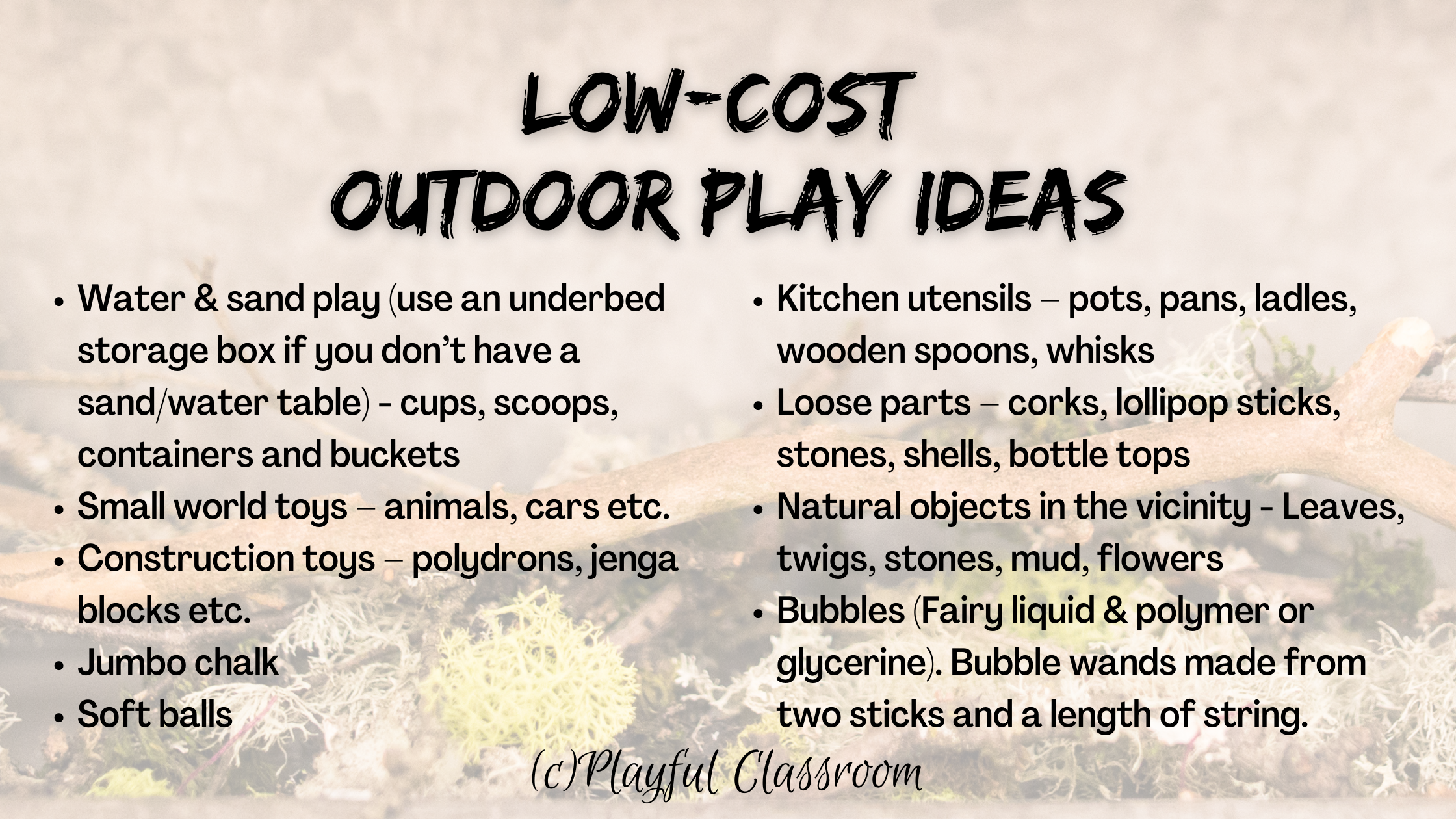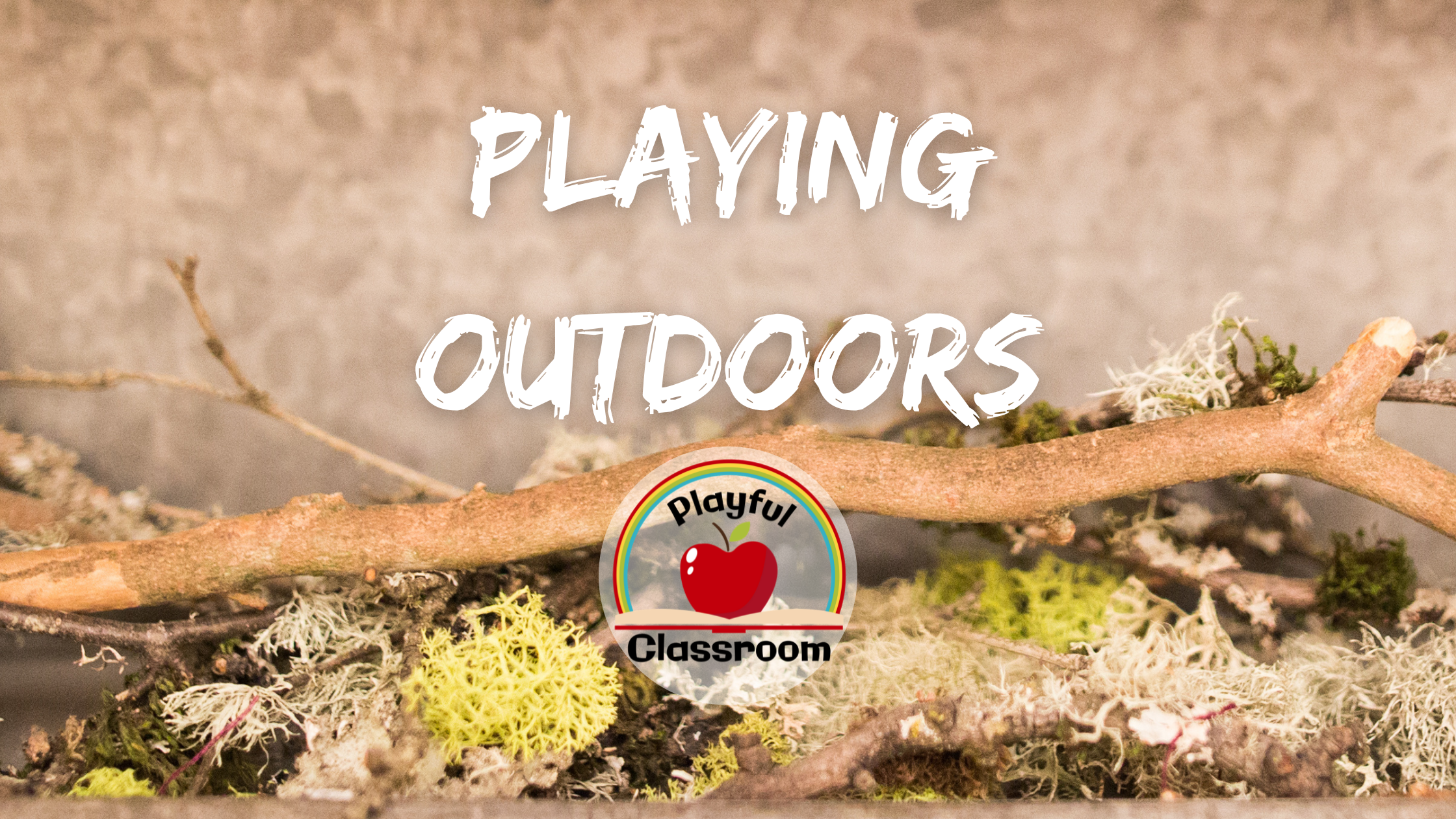The Importance of Outdoor Play
Outdoor
play allows children to take risks. It
fosters creativity. It provides an
environment that is rich in learning experiences. But most of all, it’s FUN, and goodness
knows, the children need that now more than ever.
Whatever you can do in your classroom, can be done outdoors. All you need to do is bring the resources outside. You may have tried Maths trails, sketching, nature walks or capacity outside of your school, but outdoor play is on a different level.
Play outdoors is not equal to play in the classroom. You will notice the excitement you tell the children that they can play wherever they want, with whomever or whatever they like. They can run, they can jump, and they can use their ‘outdoor voices’. When children have freedom of voice, that is when they truly play.
My own experience of outdoor play has been hugely successful so far. We have no behavioural issues. Our only rules are to respect the toys and respect each other. Every child is happy, engaged, and learning.

If you think that this is something that could get you through the last few weeks of the school year, then read on. It’s easier to facilitate than you think.
What age group would outdoor play be suitable for?
Any age! Certainly children up to 2nd class or age 8/9 would be ideal candidates, but you may find older children benefit from it too.
Where can I do it?
Any outdoor area in your school grounds will do. Access to nature (trees, grass, mud etc.) is preferable, but not essential. Any yard space will do.
What time of the day is best?
I prefer to do outdoor play towards the end of the day. If the children get mucky or wet, they’re going straight home anyway. If the end of the day doesn’t suit, no matter. Ask the children to keep spare trousers in their bags.
What resources do I need?
Less than you think. You don’t need a mud kitchen or tuff trays. Simple is best. Here is a list of some suggestions that you may have already or that don’t cost much.
· Water & sand play (use an underbed storage box if you don’t have a sand/water table) - cups, scoops, containers and buckets
· Small world toys – animals, cars etc.
· Construction toys – polydrons, jenga blocks etc.
· Jumbo chalk
· Soft balls
· Kitchen utensils – pots, pans, ladles, wooden spoons, whisks
· Loose parts – corks, lollipop sticks, stones, shells, bottle tops
· Natural objects in the vicinity - Leaves, twigs, stones, mud, flowers
· Bubbles (Fairy liquid & polymer or glycerine). Bubble wands made from two sticks and a length of string.
So what do you think? Will you give it a try for the last few weeks of term? If the sun is shining, why not head outside? I promise you won’t regret it.

Playful Classroom is a participant in the Amazon Services LLC Associates Program, an affiliate advertising program designed to provide a means for sites to earn advertising fees by advertising and linking to Amazon.co.uk.


